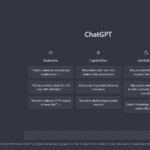What is attrition, and why should you care about it in your contact center?
Attrition is the act of reducing the size of something through wear or tear. In the context of a contact center, attrition refers to employees’ voluntary and involuntary departures. This can be a big problem for businesses, as it can lead to disruptions in service quality and increases in training costs. To combat attrition, companies need to focus on retention. This means creating a working environment that employees are happy with and providing opportunities for career growth. In addition, businesses should invest in employee development programs and offer competitive compensation packages. By taking these steps, companies can help to reduce attrition rates and ensure that their contact centers run smoothly.
The cost of attrition – what is the impact on your business when agents leave?
The cost of attrition can be high for any business, but it can be especially damaging for call centers. Not only does losing an agent mean losing the time and money invested in training that individual, but it can also lead to a decline in morale among the remaining staff. In addition, high turnover rates can be a red flag for customers, leading them to question the company’s stability. Studies have shown that it can cost up to twice as much to hire and train a new employee as it does to retain an existing one. As a result, businesses need to focus on reducing attrition rates. There are many ways to do this, including offering competitive salaries, providing ongoing training and development opportunities, and offering incentives for loyalty. By reducing attrition, businesses can protect their bottom line and maintain a high level of customer satisfaction.
How to identify the causes of agent turnover
One of the most frustrating challenges businesses face is high turnover among their customer service agents. Not only is it expensive to constantly train new employees, but it can also lead to a decline in morale among those who remain. If you’re struggling with high turnover, taking a step back and identifying the root causes is essential. Only then can you develop strategies to address the problem.
There are several common reasons why customer service agents leave their jobs. One is a need for more engagement with the work itself. If agents feel like they’re just going through the motions day after day, it’s only natural that they’ll start to look for something more fulfilling. Another common cause of turnover is a lack of appreciation from management. Agents who feel like their hard work goes unnoticed are more likely to start looking for a new job where they’ll be valued. Finally, poor working conditions can also lead to high turnover. If agents are dealing with unrealistic expectations, long hours, or toxic colleagues, it’s no wonder they’re ready to move on.
Once you’ve identified the reasons why your customer service agents are leaving, you can start taking steps to address the problem. For example, if agents feel disengaged, try implementing new initiatives to increase job satisfaction. If they’re not feeling appreciated, give credit where it’s due and show your team that you value their contributions. And if working conditions are an issue, see what changes can be made to improve the overall environment. Taking these steps can reduce turnover and create a more stable and prosperous customer service team.
Strategies to reduce attrition and boost retention
Businesses often face the challenge of reducing attrition and boosting retention rates. There are many strategies that companies can use to achieve this. One key strategy is to invest in employee development and training. This can help employees feel more engaged and invested in the company. Another approach is to create a positive work environment. This can include offering flexible work hours, opportunities for social interaction, and encouraging open communication. Finally, businesses can also provide incentives for employees who stay with the company for a certain time. These incentives could include things like bonuses, pay raises, or extra vacation days. By implementing these strategies, businesses can reduce attrition and boost retention rates.
The benefits of a low attrition rate in your contact center
A low attrition rate is essential for any contact center that wants to maintain high levels of customer service. A high attrition rate means that many employees are leaving the company, which can lead to a decline in the quality of customer service. When customers call a contact center, they expect to speak to a knowledgeable and friendly representative who can help them resolve their issues. If the contact center has a high attrition rate, it cannot be easy to find enough qualified employees to staff the phones. This can lead to longer wait times for customers and a decline in the quality of customer service. In addition, a high attrition rate can also lead to a decrease in morale among the remaining employees. They may feel overworked and underappreciated, which can further impact the quality of customer service. A low attrition rate is essential for any contact center that wants to maintain high levels of customer service. It ensures enough qualified employees to answer calls promptly and effectively, and it helps create a positive work environment.
To keep your contact center running smoothly and your customers happy, it’s vital to understand attrition and take steps to reduce it. The cost of high turnover can be high, but there are many strategies you can implement to boost retention and improve agent satisfaction. With a low attrition rate, your contact center will run more efficiently and provide a better customer experience. Have you tried any of these techniques in your contact center?












